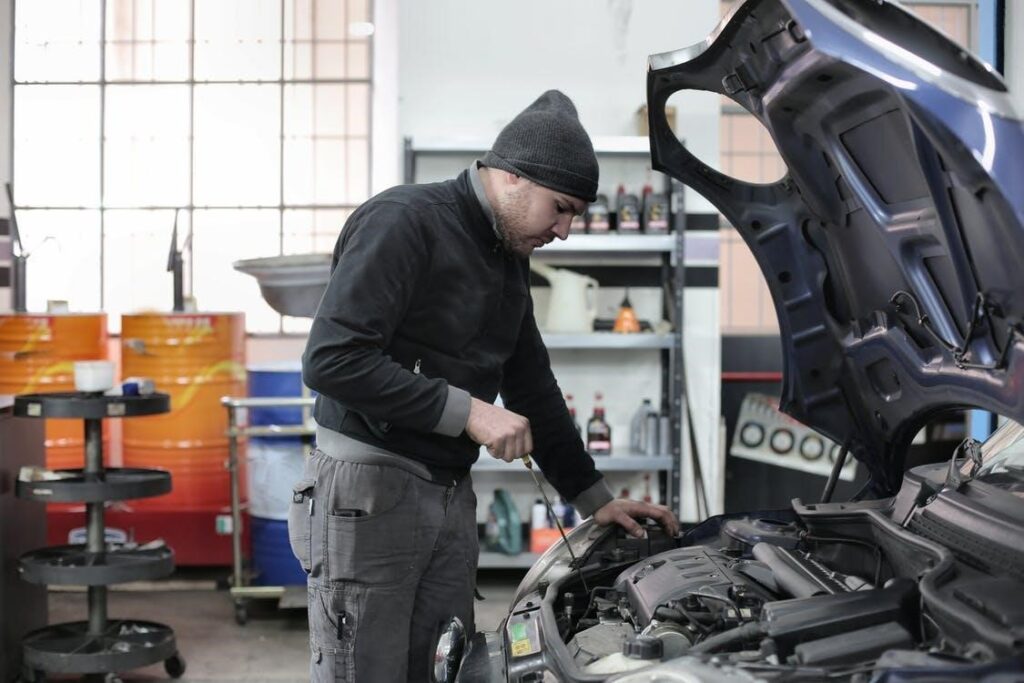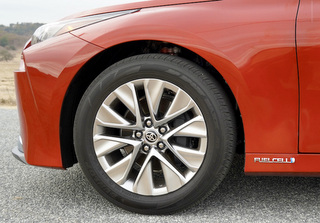Safety and Savings Are Covered with the Right Care
This article may contain affiliate links.
Whether you’re driving an electric car or a vintage machine, maintaining your car properly keeps it in top condition. It ensures you, your family, passengers and fellow drivers are safe. You spend a lot of time in your vehicle, whether commuting to work or running errands, so safety is critical.

Along with enhanced safety, a well-maintained car performs at its best. Imagine getting more stable steering, reliable engine/motor starts and better tire traction. You’ll also spend less money on fuel, whether it’s liquid in the tank for electricity in the battery.
By staying on top of maintenance routines, you’ll prevent several mechanical issues. More so, it helps in keeping the car value high. If you have plans for selling your vehicle in future, ensure you keep it safe and in good shape. That’s why auto repair and maintenance practices should be a priority.
In addition to regular maintenance, if you live in the UK it’s also important to have your vehicle undergo regular MOT tests. These tests are designed to ensure that your vehicle is safe to drive and meets environmental standards. If you’re in the Stockport area, consider consulting with MOT Specialists Stockport. They can provide comprehensive checks and necessary repairs to ensure your vehicle is roadworthy and meets all required standards.
So how do you ensure your car is in excellent shape? Here is a rundown to get you started.
Always Refer to the Owner’s Manual
Just like other household items, a car comes with an owner’s manual. The thick booklet gives you the A-Z of your vehicle for easy operation and maintenance. If your car doesn’t come with a copy, you can find an electronic version online.
Alternatively, you can contact your car dealer for a copy.
Once you have the copy, read the maintenance section and take note of the manufacturer’s maintenance advice. You’ll learn about the oil filter, hoses, engine oil, tire rotation and much more, depending on the vehicle. Follow these instructions to keep your car running smoothly.
Inspect and Maintain Tires
According to the NHTSA, there were 738 tire-related fatalities in 2017. Inspecting your tires prevents accidents that may lead to injuries or deaths.
Inflated tires give your car better fuel economy, allowing you to drive further without many fill-ups—or using as many electrons. Hence, you spend less on diesel, gas or electricity. Well-maintained tires make a vehicle run efficiently.
It’s proven that well-inflated tires last longer and won’t tear or wear out quickly.
If you want to extend your tires’ life, have a safe drive and improve your car’s ride, follow these practical tips.
Maintain the Correct Air Pressure
Most people drive around with overinflated or underinflated tires. Underinflated tires can lead to severe complications. Driving on improperly inflated tires leads to faster wear and tear. It also forces some portions of the tire to bear excess weight, resulting in uneven damage.
Your car wastes more gas (or electricity) when running on underinflated tires. It strains the powertrain because it uses more energy than it should.
Poorly inflated tires have poor traction, which may lead to accidents. Low-pressure tires are more likely to skid on wet roads.
That’s why maintaining the correct pressure is indispensable. Check the tire pressure at least once a month using a pressure gauge. These portable and inexpensive gadgets measure pressure in PSI units.
Rotate Tires After Every 5,000 Miles
When on the drive mode, not all tires drive a car. You may realize two or even one wheel drives a car at a time. For instance, a front-wheel-drive car uses the front wheels most, making them wear faster.
This case applies to a rear-wheel-drive car. Even all-wheel drive cars can have uneven wear. A qualified mechanic will rotate your tires by systematically moving them to different positions. Rotation makes tires last longer.
Check Alignment Twice a Year
If the steering wheel is unstable, or the car actively drifts or moves right or left, it means your vehicle has alignment issues. Poor alignment makes the tires toed-out or toed-in.

Even a minor misalignment can increase tread wear and drastically reduce efficiency. A little alignment maintenance can save you some bucks. Ensure your car dealer adjusts the car’s alignment after every six months.
This makes your vehicle perform at its best and ready to handle its intended job.
Rustproof Your Car
Your car may perform and look great, but when left unprotected, it can rust. Rust is not a cosmetic nuisance because it can have a more significant impact on your ride.
For example, rusting can shorten the car’s lifecycle and cause electrical and mechanical parts to fail. In the U.S, road salt is usually used to get rid of highway snow and ice. These de-icing chemicals combined with high humidity in summer creates a perfect rusting environment.
Thus, rustproofing your car is a must-task. It boosts the resale value and minimizes repair costs. Active rust control products like BG Guard keep moving parts, such as brake cables lubricated. To learn about the benefits of using a rust guard for your car, click here.
Lastly, rust-free cars are visually appealing, and their metal constituents can be recycled.
Change the Oil
Changing oil makes your car’s engine run smoothly and efficiently. Particles and dirt can accumulate in the oil, and sludge begins to build up in the engine. If you live in dustier, drier areas, you may have more particles in the oil.
Changing engine oil will get rid of debris and dirt before any damage can happen. Oil gives your vehicle life. It protects and lubricates the engine and other critical parts from wear and tear. Changing oil regularly is an investment that will keep your car in good shape for years.
Do you want to get better gas mileage? Then keep the oil clean. Build up inside the engine can cause friction, which is not good for the engine.
Ensure the engine has clean oil for ultimate fuel economy and enhanced performance.
Check the Fluids
Your car with an internal combustion engine (ICE) works on metal, fluid and fire. Since the conception of cars, drivers have always sought different ways to make their automobiles reliable and efficient. Today’s automobiles are the best, but they are not yet maintenance-free.
Fluids play a vital role, including longevity and fuel economy, even in non-ICE vehicles. Besides the engine oil, the car operates on other fluids, including:
- Brake fluid,
- Windshield washer fluid,
- Power steering fluid,
- Transmission fluid, and
- Coolant.
Any leak from these fluids can adversely affect the way your car runs. Once you notice the leak, let your mechanic fix the problem before your car develops some hitches.
The Bottom Line
Developing these maintenance practices keep your car in great shape. Remember taking care of your car is keeping yourself safe. If you’re unsure about maintenance protocol, be sure to call a reliable local mechanic for help.

While changing engine oil, replacing the fluid filters and air filters are also key components to ideal maintenance practices.
@Rudy Hiebert, Well said.